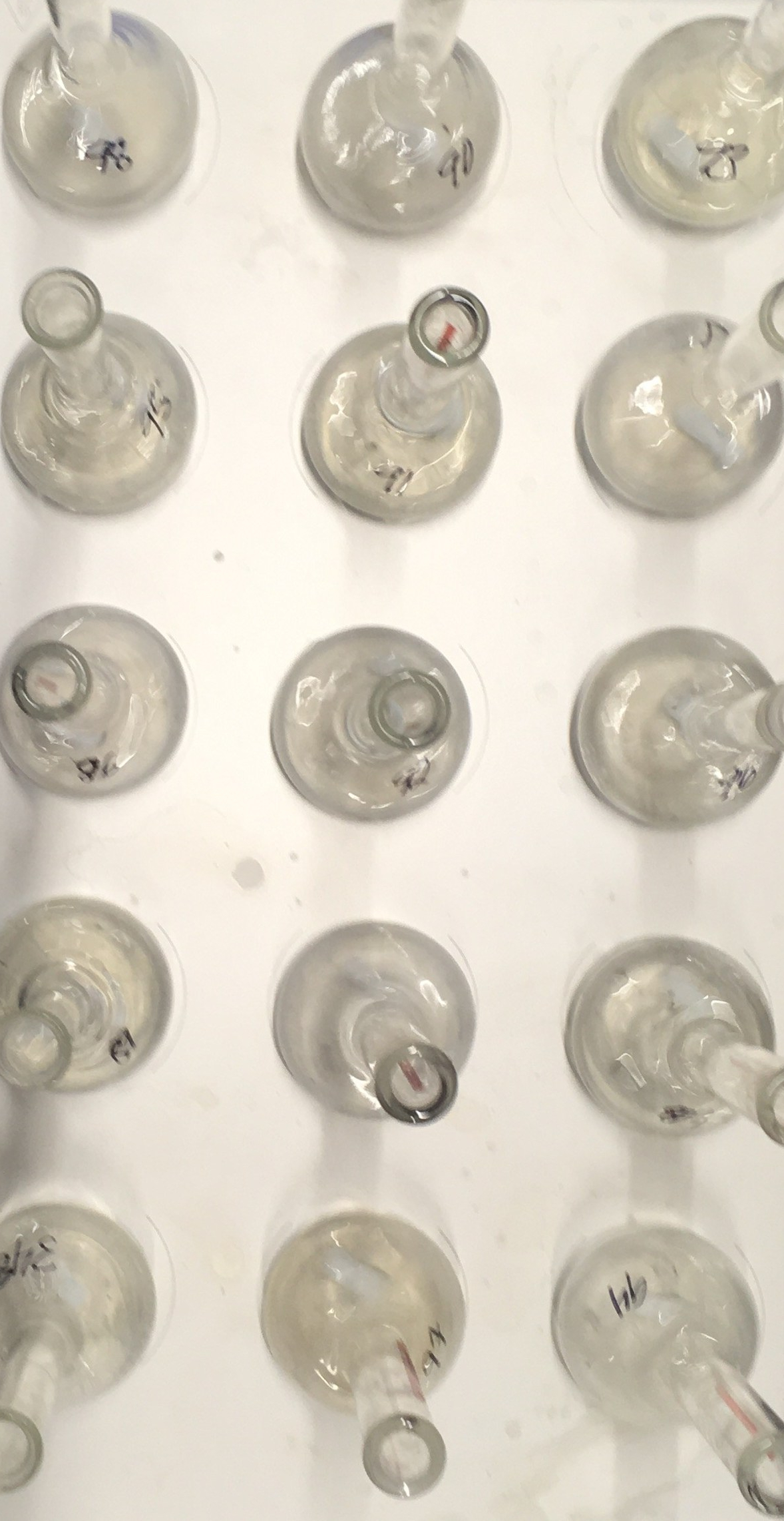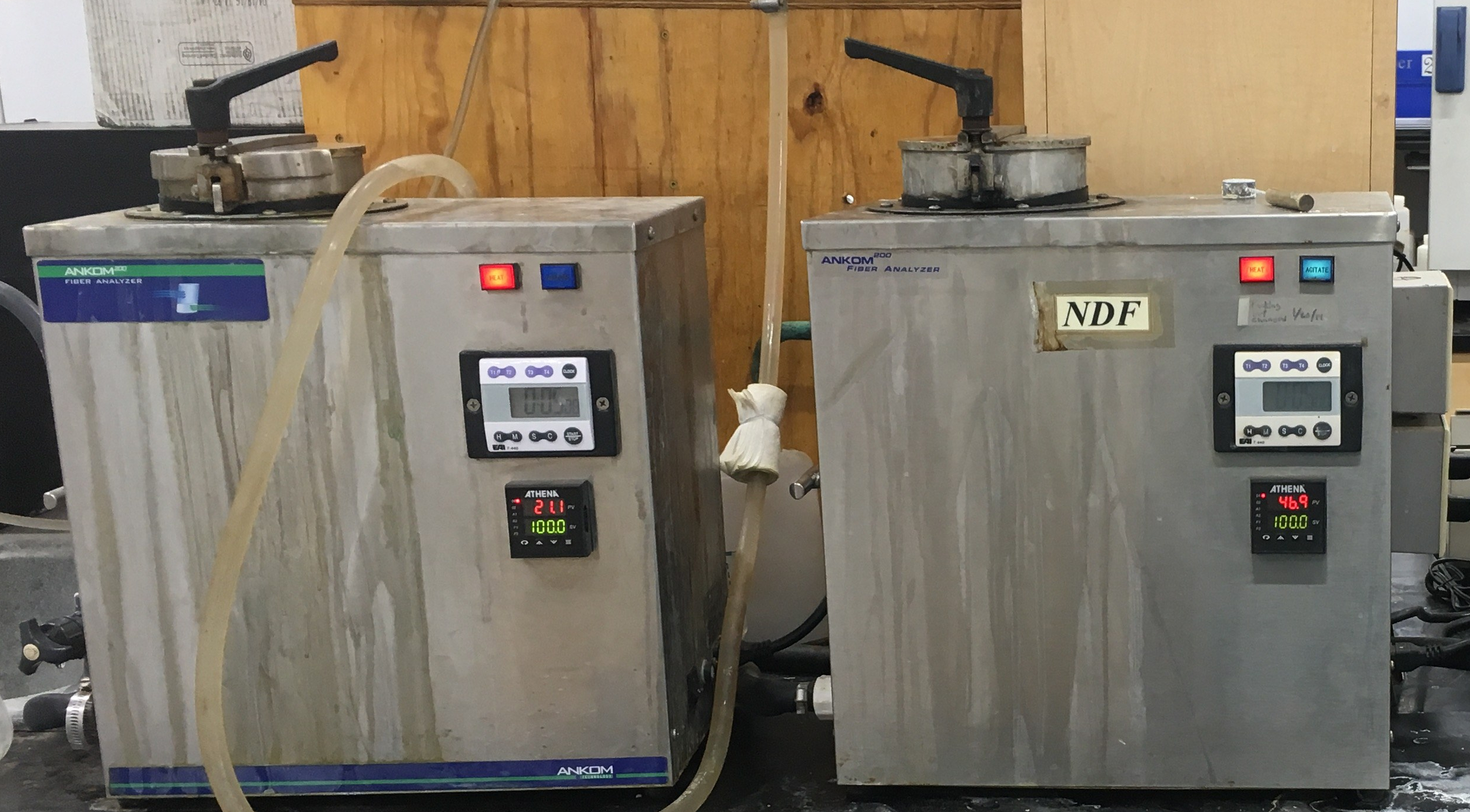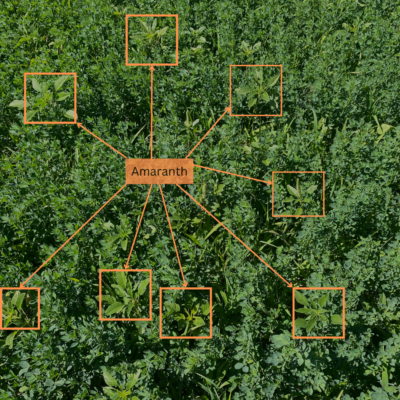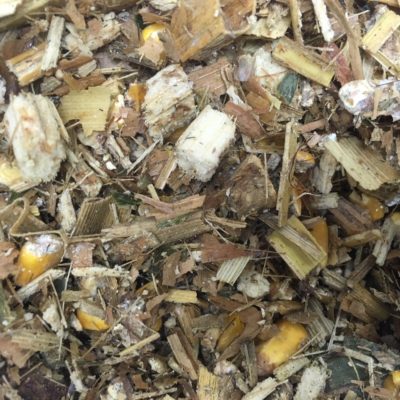The function of carbohydrates in any animal’s diet is to provide energy. Some carbohydrates are more easily digestible and provide energy to the animal, or in the case of the beef cattle, to the rumen microbes more rapidly. These carbohydrates are Non-Fiber Carbohydrates (NFC). Examples of NFC are starch and sugars, such as glucose and fructose, which are measured at Ward Laboratories Inc. as Total Sugars Invert (TSI). Starch is also analyzed at Ward Laboratories Inc. by breaking down the polysaccharide into simple sugars. An example of a high starch forage is good quality corn silage. An example of a high sugar forage is high quality alfalfa hay or haylage.

[wpvideo hXqOn1Ma]
Fibrous carbohydrates such as cellulose, hemicellulose and lignin are slowly digested. In ruminant nutrition the two fiber types we typically use in formulation of feed rations and in evaluation of forage quality are Neutral Detergent Fiber (NDF) and Acid Detergent Fiber (ADF). The indigestible and slowly digestible portion of feed is represented by NDF which contains cellulose, hemicellulose, and lignin. The least digestible portion of feed is represented by ADF and contains cellulose and lignin but not hemicellulose. Therefore, ADF is always less than NDF when represented as a percentage of the feed or forage being analyzed.

The Neutral Detergent Fiber of a feed makes up the floating mat of feed in the rumen. This floating mat physically stimulates the animal’s digestive processes, specifically rumination. A high NDF feed typically forms a mat that exists for a longer period of time in the rumen resulting in the animal feeling full longer due to the physical gut fill and consequently consuming less feed. In summary, high NDF feeds, typically low-quality forages, are predictive of low dry matter intake, while low NDF feeds are predictive of a higher dry matter intake.
Acid Detergent Fiber is used in predictive equations to calculate the energy content of the feed. Total Digestible Nutrients (TDN), Net Energy of Gain (NEg) and Net Energy of Maintenance (NEm) can all be calculated using the ADF value. Feeds with a higher percentage of ADF have a lower percentage of the high energy sugars and starches. Therefore, high ADF feeds and forages have lower energy values and low ADF feeds and forages have high energy values.
At Ward Laboratories Inc. I receive phone calls inquiring about why certain forage reports have higher Relative Feed Values (RFV) or Relative Forage Qualities (RFQ) than others or why those two index values do not match for the same feed.
Relative Feed Value was created to quickly compare the quality of legume hays such as alfalfa or clover. We often apply this index to other forages, or feeds forgetting the original purpose and loosing the understanding that it was not originally meant to be applied to grass hays, corn stalks and especially not corn grains and other non-forage feeds. Therefore, non-legume forages typically have lower than expected RFVs and animals consuming this hay perform better than the index value would predict.
Relative Forage Quality was created to be inclusive of most forages and is a quick way to fairly compare one forage to another weather it is a grass hay or legume. The values for RFV and RFQ on the same feed often are separated by as much as 20 points because RFV uses ADF and NDF to predict digestible dry matter and dry matter intake while RFQ uses crude protein, fat, NDF, NDF digestibility among other factors to predict dry matter intake and total digestible nutrients. South Dakota State University Extension has put together a great resource for better understanding of RFV and RFQ. Below are the simplified equations for each index:
RFV = Digestible Dry Matter × Dry Matter Intake / 1.29
RFQ=Dry Matter Intake × Total Digestible Nutrients /1.23
In conclusion, carbohydrates provide energy to the beef cow and support the growth and role rumen microbes play in ruminant digestion. The higher percentage of the forage or hay is made up of fibrous fractions, such as ADF and NDF, the less NFC are available to rapidly provide energy. Therefore, as ADF and NDF increase the forage quality decreases due to lower energy values and declining feed intake. So, when feeding low quality forages such as old cane hay or corn stalks it is important to provide energy supplements in the form of beet pulp, distillers grains, corn grains or molasses based liquid supplements for example. However, on low ADF and NDF, high quality forages little to no supplementation is needed to support animal maintence and production performance.





[…] a decrease in the energy provided by the forage. For more on that check out my previous post Carbohydrates and Forage Quality. The loss of vitamins and minerals may also increase the importance of feeding those nutrients as […]
[…] highest fiber content. Recall that the lower the ADF and NDF content of a forage, the higher the Relative Feed Value (RFV). Crude protein was highest in baled millet and lowest in standing […]